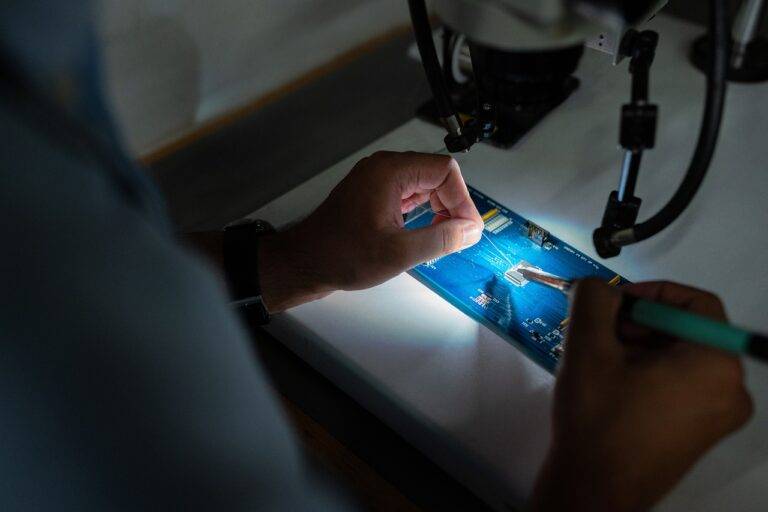Biometric Authentication: Balancing Security and User Experience
Biometric authentication is a cutting-edge technology that verifies an individual’s identity based on their unique physiological or behavioral characteristics. Unlike traditional methods like PINs or passwords, biometric authentication offers a more secure and reliable way to access devices or sensitive information. By using features such as fingerprints, facial recognition, or iris scans, biometric authentication ensures that only authorized users can gain access.
This technology has gained popularity in recent years due to its convenience and efficiency. With biometric authentication, users no longer have to remember complex passwords or worry about their credentials being stolen. Additionally, biometric data is extremely difficult to replicate, making it a highly secure method of verification. Overall, biometric authentication provides a seamless and secure way to access personal devices, corporate networks, or other restricted areas.
• Biometric authentication verifies identity based on unique physiological or behavioral characteristics
• Offers more secure and reliable access compared to traditional methods like passwords
• Features include fingerprints, facial recognition, iris scans
• Popular due to convenience, efficiency, and security benefits
• Eliminates the need to remember complex passwords
• Difficult to replicate biometric data for enhanced security
• Provides seamless and secure access to personal devices, corporate networks, restricted areas
Types of Biometric Data Used for Authentication
Biometric authentication utilizes a wide range of unique physical and behavioral characteristics for verifying individuals’ identities. Common types of biometric data used for authentication include fingerprints, which are distinctive to each person and easily captured using specialized scanners. Additionally, facial recognition technology analyzes facial features such as the distance between eyes and the shape of the face to authenticate users securely.
Another type of biometric data commonly used is iris recognition, which involves scanning the intricate patterns in the colored part of the eye to verify an individual’s identity. This method is known for its high level of accuracy and is increasingly being deployed in various security systems. Voice recognition is also a popular biometric technique that analyzes the unique sound patterns, cadence, and pitch of an individual’s voice to grant access.
Benefits of Biometric Authentication
One of the primary advantages of biometric authentication is its heightened security. By verifying an individual’s unique biological traits, such as fingerprints, facial features, or iris patterns, this technology provides a more robust layer of protection compared to traditional methods like passwords or PINs. As biometric data cannot be easily replicated or stolen, the risk of unauthorized access is significantly reduced, enhancing overall security measures for various applications.
Furthermore, biometric authentication offers a convenient user experience. With biometric systems in place, individuals no longer need to remember complex passwords or worry about forgetting them. Instead, they can simply use their own biometric features for quick and seamless access to their devices, accounts, or physical spaces. This streamlined process not only saves time but also eliminates the hassle of managing multiple passwords, enhancing user satisfaction and efficiency.
What is biometric authentication?
Biometric authentication is a security process that uses unique physical characteristics, such as fingerprints, retina scans, or facial recognition, to verify a person’s identity.
What are the types of biometric data used for authentication?
Some common types of biometric data used for authentication include fingerprints, iris scans, facial recognition, voice recognition, and hand geometry.
What are the benefits of biometric authentication?
Some benefits of biometric authentication include increased security, convenience, accuracy, scalability, and reduced risk of fraud or identity theft.
How does biometric authentication enhance security?
Biometric authentication enhances security by providing a more secure and reliable way to verify a person’s identity, compared to traditional methods like passwords or PINs, which can be easily hacked or stolen.
Is biometric authentication convenient to use?
Yes, biometric authentication is convenient to use as it eliminates the need to remember passwords or PINs, and can be easily integrated into various devices like smartphones, laptops, or access control systems.
How accurate is biometric authentication?
Biometric authentication is highly accurate, as it relies on unique physical characteristics that are difficult to replicate or fake, ensuring a reliable verification of a person’s identity.
Can biometric authentication be scaled for larger organizations?
Yes, biometric authentication can be easily scaled for larger organizations, making it a cost-effective and efficient security solution for companies with a large number of employees or users.





